We have been watching with interest the bee hotel that is positioned within our courtyard on our outside office wall. It is a perfect setting; the courtyard is rather sheltered, quite quiet and has a lovely area of Wildflower Turf within the courtyard itself.
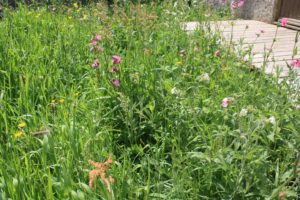
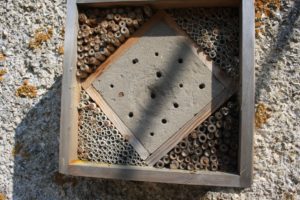
We have noticed that Red Mason Bees (Osmia rufa) which are found across the European continent, are utilising our bee hotel which is fantastic!
Red Mason Bees do not excavate their own nests and although they are solitary bees, they do prefer to nest together. Interestingly they are capable of flying at lower temperatures than Honey Bees.
They emerge from last year’s nest in early spring and they will search for a suitable new site. Their chosen habitat would generally be old mature hedgerows and along woodland edges where they would search for old bramble and hogweed stems with broken ends, or irregular cavities in stones and old walls.
The first thing that they do however after emerging, is find a meal of nectar and then mate with one of the males who pursue the females. After mating a female is ready to start nest-building. Once a female decides to occupy a tube, she enters it and provides a mud seal at the far end, and then starts to provision it with pollen mixed with a little nectar. So these are female Red Mason Bees because they are depositing pollen mixed with a little nectar and sealing up the tubes. They carry the pollen on special hairs under their abdomens.
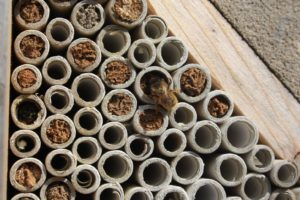
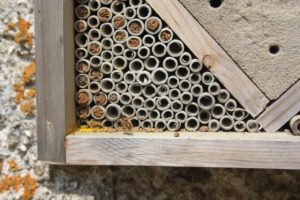
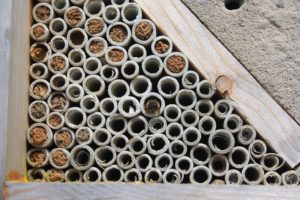
Each tube will be made up of separate chambers. She enters the tube backwards so that she can deposit the pollen by brushing it off her abdomen. She will then lay an egg on it, and seals it in the cell with a wall of mud. This process is repeated until the tube is full, which can be between six to ten cells.
The larvae grow during the summer and eventually pupate, becoming fully adult in late September when they remain in their cocoons until the following spring. What is fascinating is that the females will be at the back of each chamber, so that if the front chambers that are found by predators they are protected!